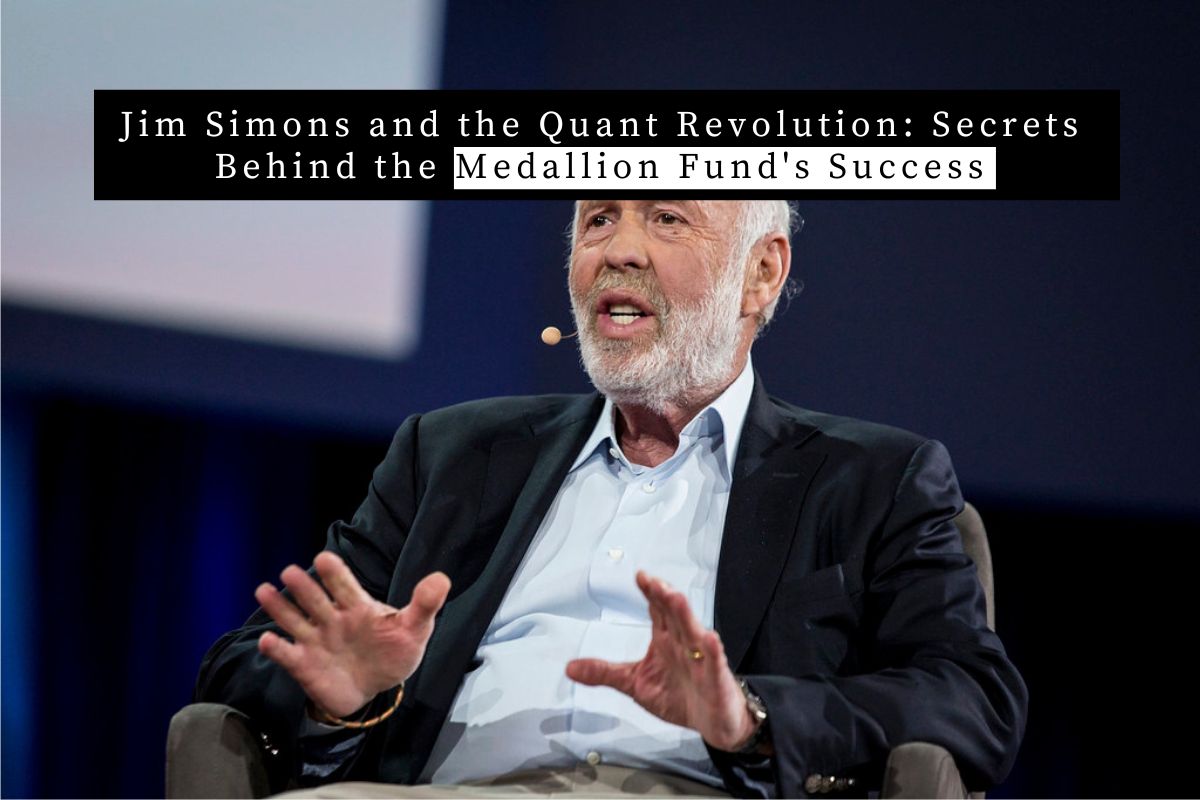Jim Simons is not your average mathematician. He is the world’s wealthiest one, with a net worth of $24.6 billion according to Forbes. How did he achieve such a feat? By starting the “quant revolution” in the world of trading through his company Renaissance Technologies and the Medallion Fund. In this article, we’ll take a closer look at the secrets behind the Medallion Fund’s success.
Table of Contents
ToggleWho is Jim Simons?
Before we delve into the Medallion Fund’s remarkable performance, let’s first look at Jim Simons’ background. Born in 1938, Simons began reading extensively at an early age. He enrolled at MIT in 1955 and was able to skip the first year of mathematics due to his exceptional high school curriculum. Simons’ passion for mathematics eventually led him to get his PhD in the field by the age of 23.
Simons began his career in stocks during his time at the University of California, Berkeley. He would wake up early each morning to watch prices flash by and make a few trades. He then worked as a code-breaker at a US intelligence unit targeting Soviet Russia. This experience taught him an important lesson in hiring people. The unit’s success was based on hiring individuals with creativity, ambition, and brainpower, rather than specific expertise or education.
In 1968, Simons published a mathematical paper titled “Minimal Varieties in Riemannian Manifolds.” This paper has been cited over 1700 times, a remarkable achievement for a paper on geometry. The same year, he was asked to build and lead a math department at Stony Brook University. Simons was an extroverted mathematician and a great leader. He realized that he wouldn’t solve the puzzle of trading alone, so he used his mathematical expertise to hire and get the best out of other mathematicians.
In 1978, Simons left academia to pursue new challenges in the world of trading. He called his first hedge fund “Monemetrics,” a play on words combining “money” and “econometrics.” He used math to analyze the financial markets and eventually renamed his company Renaissance Technologies in 1982. In 1988, the Medallion Fund was launched, and it has become the most successful hedge fund of all time in terms of its track record.
Medallion Fund’s Performance
The Medallion Fund has an impressive track record that has yet to be matched by any other hedge fund. Before fees, it has averaged a 62.9% return per year, and 37.2% net of fees, compared to the S&P 500’s 11%. Simons’ investment record is even better than Warren Buffett’s, achieved with a much smaller capital.
So, what is the secret behind the Medallion Fund’s success? The answer lies in its use of quant trading. The fund relies on mathematical models and algorithms to make trades, rather than human intuition. The algorithms have been developed by Simons’ team of mathematicians, including Elwyn Berlekamp, Leonard Baum, James Ax, and Henry Laufer, to name a few.
The Medallion Fund’s algorithms analyze vast amounts of data and execute trades within seconds. This speed and accuracy give the fund an edge over its competitors. The fund also uses leverage to increase its returns, making it a high-risk, high-reward investment.
Should You Abandon Value Investing for Quant Trading?
It’s not advisable to abandon value investing to become a day trading quant, but there is value in diversifying your investment portfolio. The Medallion Fund’s success is undeniable, but it’s worth noting that it’s not accessible to the average investor. The fund is only open to Renaissance Technologies’ employees, and even they have limited access to it.
Furthermore, quant trading is not a foolproof strategy. While it has worked well for the Medallion Fund, there have been instances where the market behaved in ways that the algorithms did not predict. For example, in 2007, the fund lost 5% due to the subprime mortgage crisis.
Conclusion
In conclusion, the Medallion Fund’s success is the result of Jim Simons’ pioneering work in the field of quant trading and his team’s expertise in developing and executing sophisticated mathematical models. While the average investor may not be able to invest in the Medallion Fund, there are still valuable lessons to be learned from its success, such as the importance of diversifying your portfolio and considering the potential benefits of incorporating quantitative strategies into your investment approach.
Further Reading and Sources:
Intelligent Investor: The Definitive Book on Value Investing by Benjamin Graham
Intelligent Investor: The Definitive Book on Value Investing by Benjamin Graham
Berkshire Hathaway Letters to Shareholders 1965-2021
Additional Resources
To keep learning and advancing your career, we highly recommend these additional resources:
A Summary of The Intelligent Investor by Benjamin Graham
Top 5 Takeaways from the Essays of Warren Buffet
Warren Buffett’s Road to Success: How A Paperboy Became A Billionaire Investor
7 Financial Models Used by Investment Bankers












